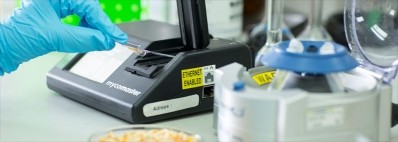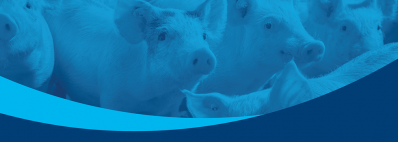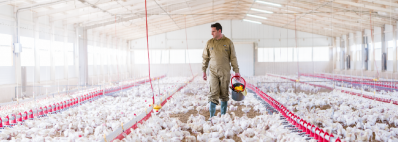Promotional Features
Managing feed hygiene following formaldehyde ban: Six reasons to consider organic acids
On December 2017, at the Standing Committee on Plants, Animals, Food and Feed (SCOPAFF), 26 European nations voted against the authorization of formaldehyde as a feed additive. The SCOPAFF vote means that EU feed mills will no longer be able to include formaldehyde as a hygiene enhancer in their operations. While feed and food safety advocates applaud the vote as a victory, the question remains for many feed mills: Is it possible to find a safe and effective alternative to support feed hygiene at the mill?
The short answer is, “absolutely” when organic acids are applied as part of an integrated feed, farm and health approach. The SCOPAFF decision shines the spotlight on the benefits that organic acids based products — particularly formic acid — can deliver by promoting feed hygiene, supporting animal health and performance and protecting against Salmonella recontamination risk at the mill. Before diving into a discussion of organic acids and their role in an integrated approach to feed safety, it is worth reviewing the use of formaldehyde and the limitations of this feed hygiene enhancer still used in many parts of the world.
As a biocide, formaldehyde has historically been used as an end-of-pipe tool for treating microbiological and feed hygiene issues in animal feed, and on the farm. Formaldehyde’s effectiveness in broadly, instantaneously and non-selectively destroying a wide range of organisms led to its widespread adaptation as a component in feed hygiene protocols. But while formaldehyde’s ability to destroy microbiological organisms is without dispute, toxicity concerns have led the European Food Safety Administration Panel on Additives and Products or Substances Used in Animal Feed (FEEDAP) to issue a scientific opinion casting doubt on the safety and efficacy of formaldehyde as a feed hygiene substance in feed for pigs and poultry. Regarding formaldehyde’s use with targeted species, FEEDAP has reported that a concentration safe for reproduction cannot be derived.
Additional concerns arise for humans exposed to formaldehyde. No safe level of exposure to human skin, eyes or respiratory system has been identified. Beyond the safety concerns specific to animals and humans, an EFSA report found additional concerns. These concerns include the reactive qualities of formaldehyde that allow it to interact with bypass proteins in the animal feed. Additionally, formaldehyde’s limited stability and volatility – especially in mash feed – provides inadequate protection against risk of Salmonella recontamination.
Organic acids: Salmonella control without formaldehyde with an integrated feed safety approach
Given the removal of formaldehyde as an available hygiene condition enhancer in the EU, feed mills are naturally looking for a path forward to protect the integrity of feed hygiene measures without compromising efficacy. Studies on alternative approaches to feed hygiene point to several factors that make organic acid based products an effective tool in supporting feed hygiene and animal health.
Following are six factors for feed mills to consider when moving toward a formaldehyde free environment.
1.) Among organic acids, formic acid is approved by the EU as a feed hygiene enhancer
In June 2017, formic acid was approved by the EU as a hygiene condition enhancer. As such, this particular organic acid can be used as an additive in raw materials as a bacterial decontaminating agent. How does formic acid work? Formic acid is primarily effective against yeasts and bacteria. As it accumulates in cell walls, it lowers pH levels and blocks metabolism by inhibiting enzymes.
2.) Organic acids deliver efficacy and safety
Organic acids have been shown to be effective feed hygiene tools. However, the method of application is much different from formaldehyde. Treating feed materials with organic acids earlier in the process can further optimize efficacy. Trouw Nutrition’s precision-driven approach to maximizing the efficacy of organic acids focuses on delivering a customized combination of products, services and knowledge to optimize outcomes at each feed mill environment.
3.) Organic acids work in feed materials, finished feeds and in the animal
In feed materials and final feed, organic acids prevent post-harvest mold growth and work to reduce the transport of foodborne pathogens. But organic acids also deliver effects in the entire gastrointestinal tract of the animal. Unlike formaldehyde which destroys microbes in feed without discrimination, organic acids consumed in animal feed work in the animal’s upper and lower gastrointestinal tracts to support a healthy microbiota in livestock and optimize poultry performance without antibiotics. Additionally, the physiological effects of organic acids include utilization of calcium and phosphorous within the animal.
4.) Organic acids support hydrothermal treatment
Hydrothermal treatment incorporating high temperatures and pressure during feed manufacturing can be part of a strategy to reduce risk of Enterobacteriaceae proliferation during processing at the mill. However, the time and temperatures required result in high energy costs while reducing or destroying some nutrients. By combining sub-optimal hydrothermal treatments with organic acids, feed mills can customize their approach to achieve the benefits of hydrothermal treatment while reducing the negative impact of increased energy costs and nutrient loss.
5.) Organic acids protect against reactivated Salmonella
Feed materials can become re-contaminated following processing, in the crushing and rendering plant, or during storage, transport and handling. Condensation may occur during the cooling process and create favorable conditions for Salmonella to proliferate. The application of organic acids formulated with a synergistic blend of ingredients can effectively reduce the proliferation of Enterobacteriaceae, such as Salmonella in feed and raw materials. Organic molecules are able to cross Gram-negative bacteria cell membranes, disrupting Enterobacteriaceae metabolism and proliferation. These acids also reduce the chances of re-contamination.
6.) Organic acid formulations address specific feed requirements
Feeds formulated with a high buffer capacity present specific challenges. Products with a high concentration of organic acids are formulated to work in feed with these characteristics. For example, Selko Fysal Feed is specially formulated with a synergistic blend of non-buffered organic acids and medium chain fatty acids effectively reducing feed’s buffer capacity and Enterobacteriaceae.
Integration is the key to an alternative feed hygiene approach
Regardless of the challenge encountered, or the management strategy implemented, an integrated approach to feed hygiene is critical. The key for successfully supporting feed hygiene and addressing Salmonella control is to create an integrated approach combining feed, farm and health management.




